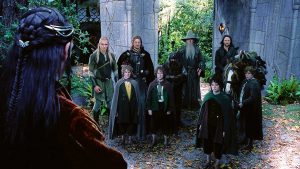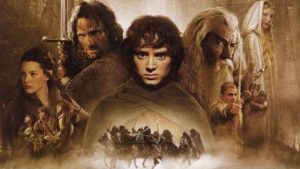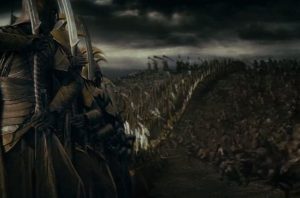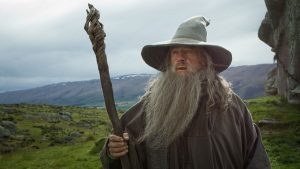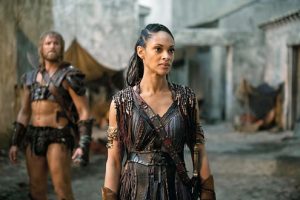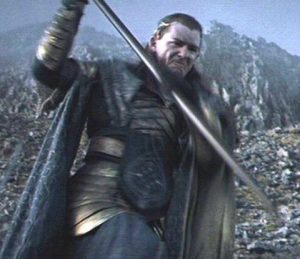The recent reveal of an official synopsis for Amazon Prime’s The Lord Of The Rings adaptation has left us all excited to jump back into Middle-earth and revel in the many joys it has to offer us. But to get fully prepared for Amazon’s upcoming series requires more than just a movie marathon or even a reread of J.R.R. Tolkien’s The Lord Of The Rings – Amazon is pulling from Tolkien’s extensive deep lore for their series, and diving into regions of Middle-earth previously unexplored by either the films or main books.
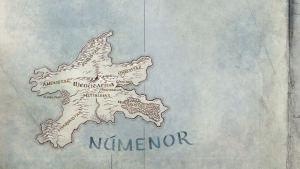
One such region is Númenor, the “breathtaking island kingdom” mentioned by Amazon in their synopsis as one of the focal points of the series. “Breathtaking” is indeed an accurate descriptor: although the reign of the Númenóreans was relatively brief in the grand scale of Middle-earth’s history, they are incredibly significant to Tolkien’s saga – representing the very height of human vanity, and arguably one of the furthest falls from grace since the rebellion of Melkor in the First Age and the Kinslaying of the Elves in Valinor. In the Second Age, thousands of years before the time of Aragorn, his Númenórean ancestors built a vast empire spanning the oceans and unmapped coasts of Middle-earth…an empire that would ultimately collapse into ruinous calamity, at least partly because Tolkien had a lifelong obsession with the Atlantis myth and had to take it out on his fictional characters. And now Amazon’s Second Age series (which for some reason is still titled The Lord Of The Rings) will take us on an epic journey alongside the Númenóreans, through their heyday and their terrible fall.
To understand Númenor, we have to go back to the First Age of Middle-earth, and the frequent alliances between Men and Elves that forged a seemingly unbreakable bond of friendship between the two races. The First Age ended in a glorious triumph of good over evil, with Middle-earth’s entire pantheon of gods, the Valar, arriving in a divine cavalcade to finally defeat the dark lord Morgoth and disperse or destroy his armies of orcs and dragons: but defeating a dark lord is hard work, and sometimes requires you to destroy large portions of the world to do so – and thus, there was a refugee crisis in Middle-earth as Men and Elves had to flee from their ancestral homelands, trying to get out ahead of the rapidly disintegrating coastlines and crumbling mountain ranges. Thankfully for Men, the Valar were feeling pretty generous and decided to simply lift an island out of the sea as a gift to humans and compensation for their countless sacrifices. This island, most commonly known as Númenor, had many names: but one – Andor – literally means “The Land of Gift”.
As if that wasn’t enough, the gods also decided to give significantly longer lives (around 200 years, on average) to the Númenórean people, so they could enjoy their Land of Gift even longer and reap the benefits they had earned. This probably seemed like a good idea at the time. Spoiler Alert: it wasn’t.
But throughout the early Second Age, the Númenóreans were content with what they had: their star-shaped island and its farms, forests, rivers, seashores, and single mountain. This mountain, named the Meneltarma, rose out of the center of the island and was crowned by a holy shrine and a nesting-place of many sacred eagles. But because Númenor was situated directly in between Middle-earth and the divine lands of the Valar in distant Valinor, and because the Meneltarma was so tall, a person standing at the mountain’s summit on a clear day could just about see the shores of paradise to the west (because the earth was canonically flat in the Second Age). Elves from Valinor sometimes even visited Númenórean shores and delighted Men with their company and rich gifts, which had no equal in Middle-earth. But the Valar strictly prohibited Númenóreans from returning the favor and sailing to Valinor.
The first king of Númenor was Elros, the long-lived twin brother of Elrond Half-elven, but Amazon’s Middle-earth series will likely begin sometime after his reign – during an era of “relative peace”, as their synopsis claims, and presumably not long before the forging of the One Ring in Second Age 1600. I suspect the series will open in the waning years of Tar-Meneldur’s reign, a blissful period of time depicted in The Mariner’s Wife, Tolkien’s only nearly complete tale of the Second Age. This would naturally segue into the story of Meneldur’s son, Tar-Aldarion: under whose reign the kingdom became an empire, with fleets of ships (often personally piloted by Aldarion) constantly departing to Middle-earth’s shores, setting up outposts and colonies there. His rule was not tyrannical or cruel, but his restlessness was an omen of worse to come. And after his death, his colonists became hostile to the indigenous peoples they encountered, and hurt the earth in their hunt for resources.

Prior to Aldarion’s reign, a group of forest-dwelling Men known as the Drúedain had also lived in Númenor – but as the empire expanded and its people became more dissatisfied with the gifts they had been given, the Drúedain predicted the doom that would soon follow, and they abandoned the island over the next few centuries, returning to Middle-earth and disappearing from history for thousands of years: until the Third Age, when they would reappear as the Wild Men in Rohan and Gondor. In them, I see the perfect viewpoint characters for Amazon’s series, as they embody the down-to-earth, hobbit-like qualities of Tolkien’s most iconic heroes.
By this point, war was raging between the Elves and the dark lord Sauron on the mainland – though this would not have initially affected Númenor had its colonies in Middle-earth not become so crucial to the kingdom. Tar-Minastir and his successors sent forces across the sea to aid the Elves in battle, provoking Sauron to turn the full force of his hatred towards the island. He was able to bring at least three Númenórean lords into his service using Rings of Power, and they became terrible Ringwraiths. But even on the island itself, the shadow of Sauron inspired darkness in the hearts of Men: kings became as greedy for life as they were for power and wealth, and their fear of death led some to resent the immortal Elves or speak openly against them. Elven ships stopped coming from Valinor. Those who still held the Elves in reverence were called the Faithful.
Upon the death of Tar-Palantir, the last good and wise king, his daughter Tar-Míriel’s throne was quickly usurped by her cousin, a reckless and easily corruptible man named Ar-Pharazôn. He rejected the Elves and their help entirely, and concentrated his power solely on maintaining the empire he had stolen. In his arrogance, he sent a great armada to Middle-earth to capture Sauron, and the dark lord willingly surrendered himself up to the king, gaining free passage into Ar-Pharazôn’s court – and eventually an enviable position as his most trusted counsellor and right-hand man. Seduced by Sauron’s charismatic malice, Ar-Pharazôn ran his empire as the dark lord saw fit: inciting violence and panic among his citizens (remind you of anybody else?), and instituting a new religion based around the ancient evil of Morgoth, for whose temple Sauron demanded a steady flow of human sacrifices. These victims were often political prisoners from among the Faithful, Sauron’s chief enemies.
As Ar-Pharazôn’s life neared its natural end (and lifespans were steadily diminishing in Númenor, as the Valar slowly retracted their gifts), the king turned to Sauron in desperation, demanding a cure for death. Sauron, seizing his opportunity to kill two birds with one stone, instructed him to build a fleet of ships capable of sailing into the west – breaking the ban of the Valar – and storming paradise: for only in the uttermost west of Valinor could deathlessness be obtained. Ar-Pharazôn was too far gone to see through his lies and immediately started building his fleet: but the Faithful, led by Elendil of Andúnië, built their own in secret, preparing for the inevitable catastrophe.
In Second Age 3319, Ar-Pharazôn’s mighty fleet departed into the west, with the king himself joining his army on the perilous journey – while Sauron remained in his lofty temple, laughing at the ignorance of Men. Ar-Pharazôn reached Valinor and set foot in the undying lands of the gods, but the Valar, themselves afraid of the king’s power, prayed to the One Above All, Eru, to help them in that hour…and, well, they got more than they bargained for. Not only were Ar-Pharazôn and his army crushed beneath a mountain, but Númenor itself was unmade, and the island descended into the abyss. Most of the population died, and the few that survived were the Faithful, escaping in their own ships back to Middle-earth. Eru also took the extra measure of reshaping the earth into a globe so that mortals could never again reach Valinor, but would instead spend their days sailing west in a never-ending, self-destructive search for paradise.
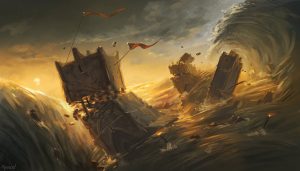
And as for Sauron, who was caught up in the downfall…he died so hard that, even though his soul escaped intact, he was never again able to appear beautiful to Men or Elves. His greatest weapons, which had been seduction and deception, now became brute strength and violence. But that didn’t stop him from pursuing Elendil and the Faithful back to Middle-earth and continuing the fight against their new “kingdoms in exile” all the way into the Third Age, when Aragorn – Elendil’s last legitimate heir – was instrumental in his ultimate defeat.
And there you have it. The moral of this story is that (a) imperialism is evil, obviously, and that (b) you should be content with what you have – because the gods can take it away, and they will likely do some planetary redecorating while they’re at it.
But what do you think? Share your own thoughts, theories, and opinions, in the comments below!
